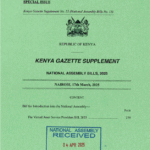A group of Brazilian researchers recently made an incredible discovery following heavy rains in the southern state of Rio Grande do Sul. They believe they have uncovered the fossilized remains of one of the world’s oldest dinosaurs. The fossil, estimated to be around 233 million years old, was found near a reservoir in Sao Joao do Polesine. The team, led by paleontologist Rodrigo Temp Müller from the Federal University of Santa Maria, made the discovery in May.
This significant find has yet to be confirmed by other scientists or published in a scientific journal. However, the researchers speculate that the dinosaur lived during the Triassic period, a time when all the continents were united in a supercontinent known as Pangaea. It is believed that dinosaurs originated during this time. The apex predator found in Rio Grande do Sul is part of the Herrerasauridae group, which used to roam the lands that are now Brazil and Argentina. The bones indicate that this dinosaur would have been about 2.5 meters long.
Herrerasauridae was a group of meat-eating dinosaurs. They are some of the earliest-known dinosaurs, named “Herrera’s lizard” after the rancher who found the first specimen in 1958 in South America. Fossils of this carnivorous animal have been found in the Ischigualasto Formation, dating back to 231.4 million years ago, in northwestern Argentina during the late Triassic period. The group went extinct by the end of the Carnian stage.
Herrerasaurids were relatively small dinosaurs, typically not exceeding 4 meters in length, although the holotype specimen of “Frenguellisaurus ischigualastensis” is believed to have been around 6 meters in length. The research team spent about four days excavating before transporting a rock block containing the specimen to the laboratory for testing where they discovered that it was actually an almost complete skeleton. The specialists believe that the skeleton they found might be the second most complete one belonging to this particular type of dinosaur.
The researchers will now work on identifying whether the fossil is from a known species or a new discovery. This process will require several months, as it is meticulous and careful care needs to be taken to avoid any damage. Fossils are often unearthed after rainfall, as water washes away sediment, revealing the materials beneath in a process called weathering. Earlier this year, the state of Rio Grande do Sul witnessed an unprecedented amount of rainfall, leading to devastating floods that claimed the lives of at least 182 individuals, as reported by the state’s civil defense.
The overwhelming rainfall resulted in extensive destruction of property and infrastructure, causing widespread displacement and loss. Climate change, primarily driven by the continued burning of oil, gas, and coal, has been identified as a significant factor in the increased likelihood of extreme weather events such as this. The recent heavy rains have led to the emergence of more fossils, sparking a race against time to salvage these materials before they are damaged.
During their fieldwork, Paleontologist Temp Müller and his team witnessed the destruction of a leg bone and a pelvic bone due to the rain. This latest discovery is anticipated to provide valuable insights into the origins of dinosaurs. The well-preserved new fossils are expected to enhance our understanding of this topic, which is still the subject of much debate.
The discovery of dinosaur fossils has been a global phenomenon, spanning every continent, including Antarctica. However, the richest deposits and the most diverse range of species have been found in the high deserts and badlands of North America, notably the United States, China, and Argentina. These regions have yielded a wealth of information about the prehistoric world and its inhabitants, contributing significantly to our understanding of dinosaurs.
The United States, especially the Western region, is known for its abundant dinosaur fossils, with the Morrison formation being a key source. China’s Liaoning province is also rich in Cretaceous fossils, including well-preserved specimens of feathered dinosaurs. Argentina’s deserts have protected many fossils, and the UK, particularly southern England, has also made significant contributions to paleontology with numerous dinosaur discoveries.
ALSO READ: Chinese and Egyptian experts digitize Egyptian antiquities













